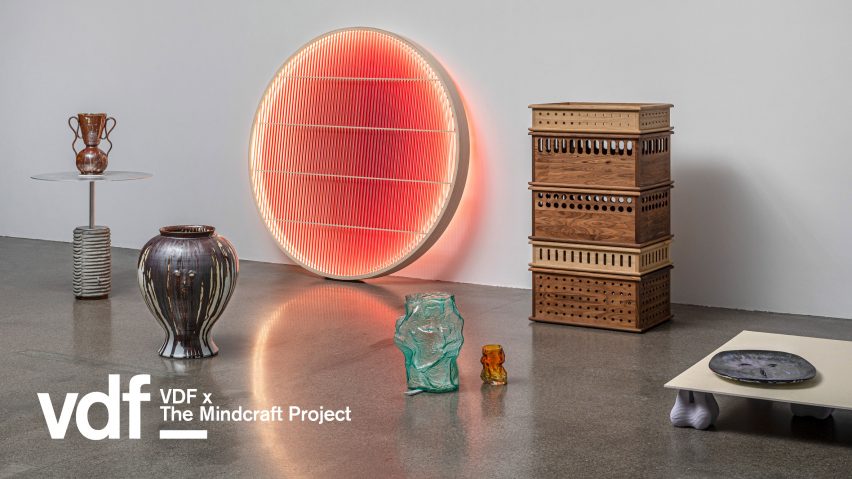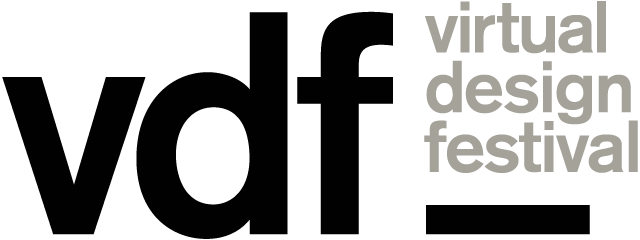
The Mindcraft Project 2020 showcases the work of 10 Danish designers at Virtual Design Festival
A chair grown from fungi and hemp and ceramics inspired by occult rituals are among the design pieces presented by The Mindcraft Project for VDF.
Virtual Design Festival has teamed up with The Mindcraft Project to present projects by ten Danish designers and artists, which would have been showcased at The Mindcraft Project's annual exhibition at Milan design week.
The Mindcraft Project is a platform for explorative and experimental design from Denmark, which has been exhibiting at Milan every year since 2008. However, the 2020 edition of the exhibition was turned into a purely digital experience due to the coronavirus pandemic.
Copenhagen Design Agency worked with Wang & Söderström, the studio which would have designed the now cancelled exhibition in Milan, to create the virtual show.
"The digital exhibition unfolds a curated selection of artistic, research-driven and experimental design projects by ten of Denmark’s most notable designers and artists," said Copenhagen Design Agency.
As part of VDF, we are showcasing ten videos profiling the work of each of the designers. The full virtual The Mindcraft Project 2020 exhibition can be found at mindcraftproject.com.
Arc Collection by Norm Architects
Norm Architects' Arc Collection, a range of stone furniture projects, was made by reusing leftover material from a local stone manufacturer. The studio utilised the inverted shapes of the scrap stone, harvesting new forms out of old.
"They are all based on the idea of using leftover materials or scrap pieces of solid stone," the studio said. "We saw these leftover materials that were created when you cut out a round piece of tabletop."
The collection pays respect to historic architecture and classic materials, combining them with contemporary details for a collection that represents simplicity and beauty in total balance.
Myx Chair by Jonas Edvard
The Myx Chair by Jonas Edvard is an organic design made from mushroom mycelium (the vegetative part of fungi) and hemp fibres.
"I do research into sustainable materials for furniture and lighting and I produce bespoke artwork and design," Edvard said. "For the Mindcraft Project 2020, I have made a chair from mushroom mycelium and hemp fiber."
Composed out of homegrown material, the chair is made from several layers of hemp and mycelium fiber matte, which are moulded and folded into shape, and then grown into a solid shape. After three weeks, the result is a lightweight, aesthetically pleasing and strong chair.
Dependables by Maria Bruun
Maria Bruun was inspired to create Dependables by the ritual attached to storing beloved things. The result is a unique, stackable box system made out of solid walnut and oak wood.
"I wanted to refine the act by making a box in the noblest wood and carry out the details, making it a piece of furniture art that becomes a functional sculpture – but is still just a box," Bruun explained.
An elegant stacking feature means the boxes can be transformed into a piece of furniture that is both functional and sculptural. The boxes are crafted by hand, with Bruun carefully giving every little detail her full attention.
Focus by Kasper Kjeldgaard
Kasper Kjeldgaard's Focus is a mobile comprising a brass skeleton with stainless-steel structures and steel wire, which is designed to draw attention to its centrepiece, a black diabase stone.
Kjeldgaard is interested in the laws of gravity, friction and rotation and the work is intended to create an awareness and tension between materials, function and purpose.
"I have been chasing the sculpture and a more poetic side of design," said Kjeldgaard, who originally trained as a furniture maker. "I use design to ask questions and point out subtle relevant problems in the way we act as humans."
Kurenai Light Object by Ane Lykke
Ane Lykke's Kurenai Light Object was crafted in a three-dimensional grid from cypress wood using the traditional Japanese woodworking technique Kumiko.
The designer fused traditional Japanese craftsmanship and a new Nordic perspective for the light, which combines the intangible – light – with elements of form and structure that generates an ever-changing experience.
"I am focusing on how I, through my work, can engage and touch people," Lykke said. "My aim is to create a dialogue. A direct bodily connection with the surroundings. My work revolves around the interaction between light and layered structure. I am exploring different stages of light and perception."
A mountain, a flowerpot, a vase, a pitcher, a cup by FOS
Danish artist FOS' objects – including a selection of vases and a pitcher – all embody the surface of a mountain, adjusted to the size of human interiors. The result is a collection of little mountains in glass and terracotta.
"A mountain is an infinite, impossible, endless surface of area, which we can't really fathom," FOS said. "If we scale it down into a more obvious size as a vase then it is more clear."
The works challenge how we perceive and relate to scale. The artist conquers the massive form of a mountain by stripping it down and rebuilding it in a fragile material, as a way of combining nature's forms with domestic objects.
Totem by Cathrine Raben Davidsen
Cathrine Raben Davidsen trained as a painter and her Totem piece was partly inspired by art history.
The porcelain and stoneware objects are a contemporary take on ancient ceramic containers used in occult rituals, resulting in a manifestation of how old tradition and modern mystique can be combined.
"I often use and juxtapose references from cultural traditions, ancient history of craftsmanship but also masters of European art history," the artist said.
Made in collaboration with porcelain manufacturer Royal Copenhagen, Totem also takes its cues from prehistoric Mexican terracotta, the Danish Bronze Age and German Bartmann ceramics from the 16th and 17th centuries.
Growth Chaise Longue by Mathias Bengtsson
"I work with the intersection between art, design and technology," sculptor and furniture-maker Mathias Bengtsson said. "Technology versus the hand."
His Growth Chaise Longue is created in a biomimetic process, where digital seeds mimic natural growth, simulating the rules and methods of nature.
Once the seat reaches its final shape, it is 3D-printed to create a mould and then cast in bronze to create a sculptural furniture piece.
"The structure has grown using algorithms that we have found in nature or that mimic nature," Bengtsson explained.
Seam Table by Krøyer-Sætter-Lassen
Krøyer-Sætter-Lassen was founded in 2016, and the studio works in different fields of design. For The Mindcraft Project, the studio explored how a 3D concrete printer can change the way we understand design and crafts, and how excess concrete from the construction of the Copenhagen Metro can be reused.
"3D printing has, for a while, been an essential part of our design process when making models," the studio said. "For The Mindcraft Project 2020, we have been experimenting with 3D printing in concrete."
The result is the Seam Table, which consists of a tabletop in aluminium, which is kept in place by a body in concrete, mounted on a wooden base.
By intentionally affecting the machine and the concrete, the designers have created coincidences and inaccuracies in the material that result in a 3D-printed design that has both human and tactile qualities.
Friction In Between by Tanja Kirst
"I am interested in material research about plant fibres for textile use and how to incorporate sustainability throughout the entire design process," textile designer Tanja Kirst said.
Her project Friction In Between consists of two rugs in calming colours and patterns of optical repetitions, hand-woven from hemp yarn. Each thread consists of 50 thin threads, which have been spun together and dyed.
"The fact that hemp requires little water, can be cultivated without fertiliser and improves soil structure and adds nutrients as it grows makes the hemp plant important in the aim for a more sustainable textile production," Kirst said.
The Mindcraft Project 2020
Exhibition by Copenhagen Design Agency
Exhibition design and visuals by Wang & Söderström
Photography by Anders Sune Berg
Videos by Michael Sangkoyo Gramtorp
